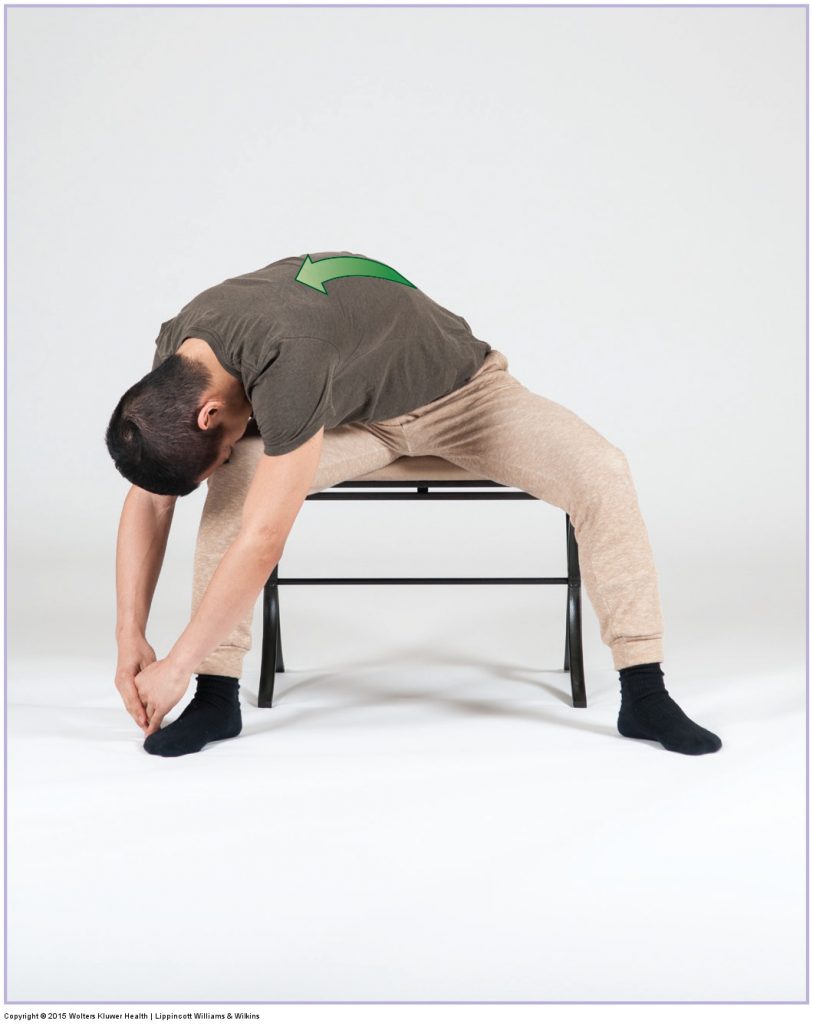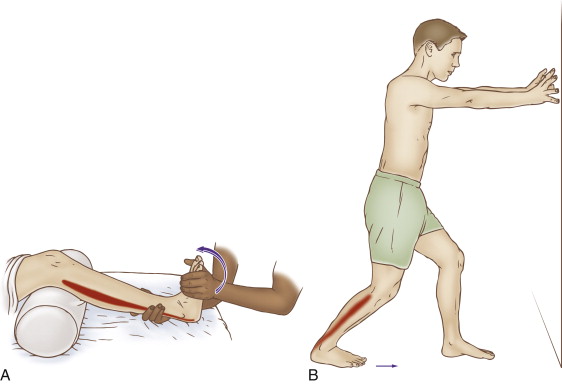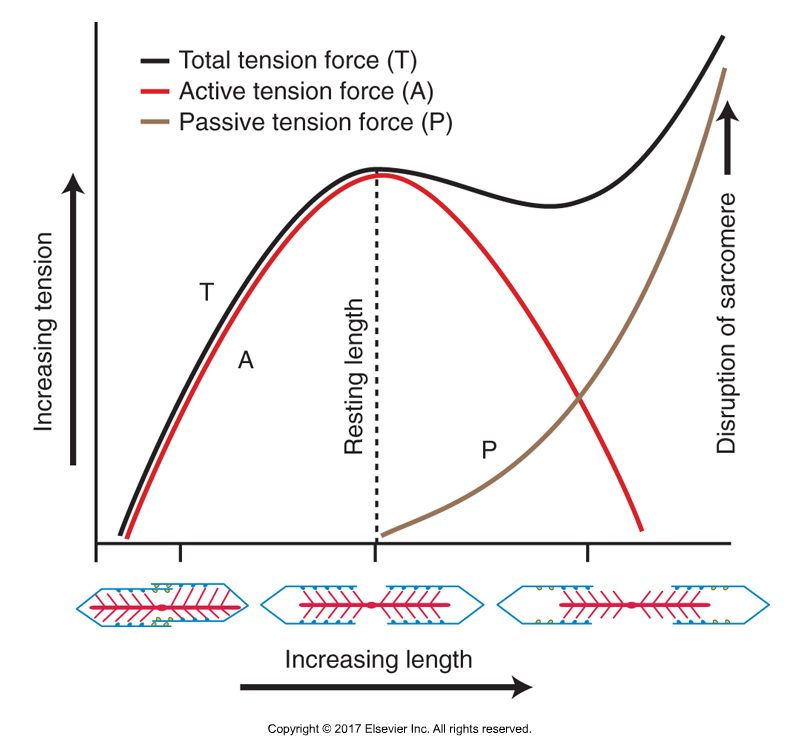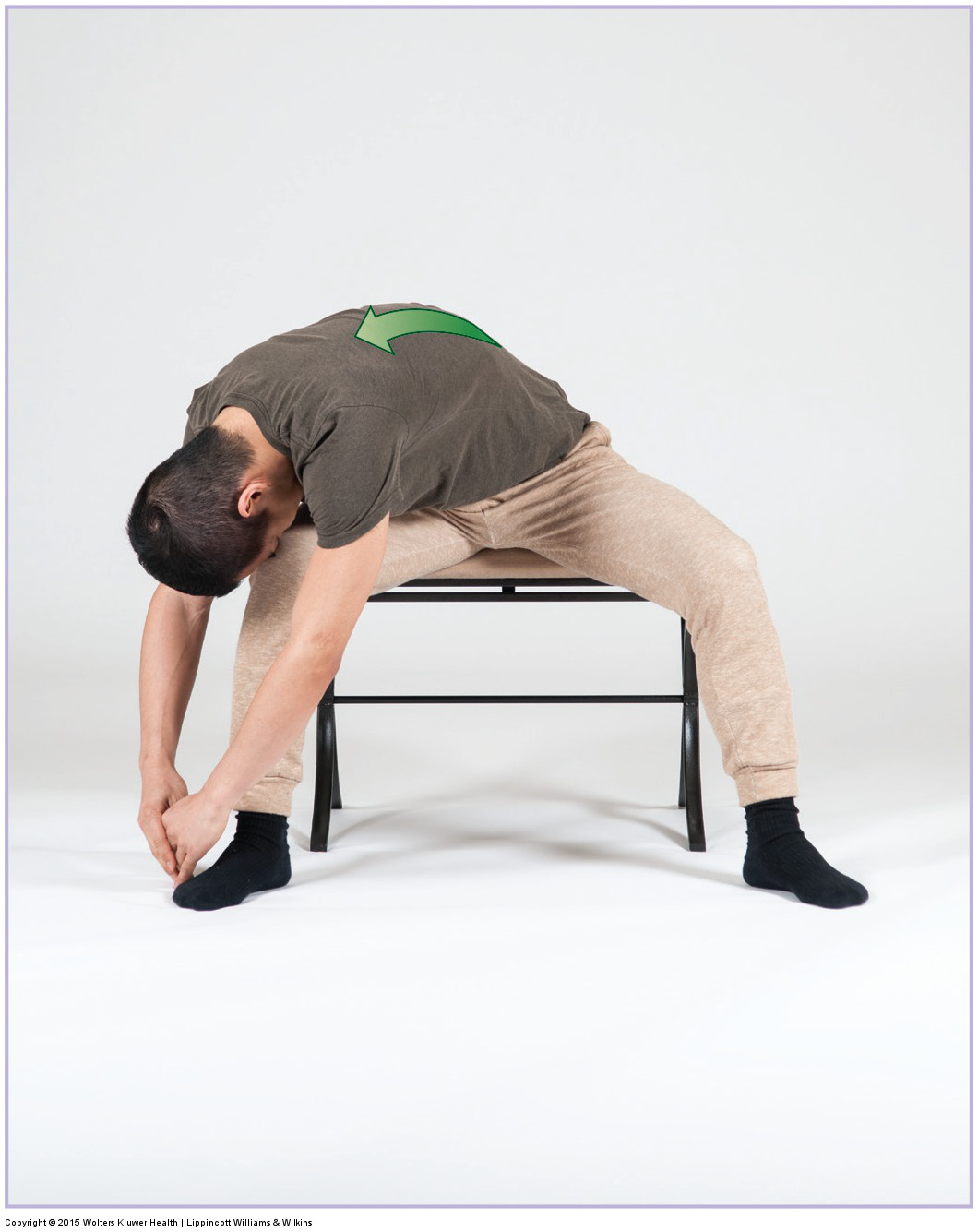Stretching and Muscle Weakness

Permission Joseph E. Muscolino. Manual Therapy for the Low Back and Pelvis – A Clinical Orthopedic Approach (LWW, 2015)
Warm-up stretching is usually performed before an exercise with the aim to reduce the risk of injuries and improve performance. There have been controversial studies that have shown that although static stretching of a muscle-tendon (myofascial) unit temporarily improves joint range of motion (ROM), the static stretching can also temporarily impact the muscles’ ability to exert maximal force, in other words, static stretching can temporarily weaken the muscle.
Researchers from the School of Health and Sport Sciences, Chukyo University, Japan, studied the viscoelasticity of the medial head of the gastrocnemius muscle-tendon unit after stretching. The term viscoelasticity, synonymous with the term elasticity, is defined as the ability of a soft tissue to return to its normal length after it has been stretched, in other words, after it has been lengthened.
Two studies were conducted:
Study – Elasticity of the Muscle
The first study was published in the February 2013 issue of the Scandinavian Journal of Medicine Science Sports.

Stretching the ankle joint into dorsiflexion. Permission Joseph E. Muscolino. The Muscle and Bone Palpation Manual – with Trigger Points, Referral Patterns, and Stretching, 2nd Edition (Elsevier, 2016).
Eleven males participated in the study. For five consecutive days, passive dorsiflexion of the ankle range of motion (ROM) was assessed at the following intervals relative to the stretching that was performed:
- Before (baseline)
- Immediately (0 minutes) after
- 15 minutes after
- 30 minutes after
- 60 minutes after
- 90 minutes after
The test involved passively dorsiflexing the foot at the ankle joint at a rate of one degree per second until end ROM was reached. This end ROM stretch position was then held for one minute. And this stretching protocol was repeated five times. Two factors were measured.
- Ultrasonography was used to measure the displacement of the myotendinous (muscle-tendon) junction of the medial head of the gastrocnemius during the passive dorsiflexion test. In effect, this measured the lengthening stretch of the muscle.
- An isokinetic dynamometer was used to measure passive torque, in other words the muscle’s stiffness or resistance to stretch during the passive dorsiflexion test.
Results
- End ROM was significantly increased at 0, 15, and 30 minutes after stretching as compared pre-stretching (baseline) ROM. Hence the lengthening achieved as a result of the stretching remained for up to 30 minutes after the stretching procedure was performed.
- Passive torque resistance at end ROM was significantly decreased after stretching. However, this reduced passive torque stiffness/resistance of the muscle-tendon unit remained for only 15 minutes, after which the muscle’s pre-stretch stiffness/resistance returned.
These results showed that the length of the muscle and the resistance to stretch of the muscle both decreased as a result of the stretching.
Study – Stretching & Muscle Weakness
The authors conducted a second study to clarify the time course of the stretching-induced decrease in maximal isometric plantar flexion torque. This study was published in the January 2014 issue of Journal of Strength and Conditioning Research.
Nineteen women participated in two randomly ordered groups. The treatment group was statically stretched for 5 minutes; the control group had no stretching performed. The participants performed isometric maximal voluntary contractions (maximum strength contractions) of the right plantarflexor muscles. Electromyographic (EMG) amplitude was calculated for the medial and lateral heads of the gastrocnemius (EMG measures the nervous system’s ordering of the muscle contraction). Measurements were conducted preintervention; immediately after intervention; and at 5, 10, 15, and 30 minutes postintervention. As with the first study, the static 5-minute stretching trial consisted of dorsiflexion to the end range of motion and holding that position for one minute; this was repeated five times. The individuals in the control group rested for five minutes.
Results
Results showed that the maximal voluntary contraction torque was significantly decreased immediately after, and 5 minutes after the static 5-minute stretching compared with the preintervention value. But this change recovered within 10 minutes. Meaning that the loss in strength after static stretching was recovered by ten minutes post-stretch. Meanwhile, the EMG amplitude did not change from preintervention to postintervention under any condition.
Why Does Static Stretching Weaken a Muscle?

Permission Joseph E. Muscolino. Manual Therapy for the Low Back and Pelvis – A Clinical Orthopedic Approach (LWW, 2015).
Two primary hypotheses have been proposed to explain the stretching-induced force deficit, in other words, the muscle weakness…
Digital COMT
Did you know that Digital COMT (Digital Clinical Orthopedic Manual Therapy), Dr. Joe Muscolino’s continuing education video streaming subscription service for massage therapists (and all manual therapists and movement professionals), has at present (October of 2018) more than 1,000 video lessons on manual therapy continuing education, including entire folders on stretching, joint mobilization, and massage. And we add seven (7) new videos lessons each and every week! And nothing ever goes away. There are also folders on Pathomechanics and Anatomy and Physiology, including an entire folder on Cadaver Anatomy… and many, many more on other manual and movement therapy assessment and treatment techniques? Click here for more information.
Neural Hypothesis
The first hypothesis was that a neural factor was involved in the stretching-induced weakness, and this caused the decreased muscle activation and reflex sensitivity (in other words, the muscle was inhibited from contracting). The neural effect can be evidenced if there is a decrease in muscle EMG. This study showed no significant changes in EMG amplitude. Therefore, the neural factor was discounted as the primary effect in the stretching-induced muscle weakness.
Mechanical Hypothesis

Length-Tension Relationship Curve. Permission Joseph E Muscolino. Kinesiology – The Skeletal System and Muscle Function, 3rd Edition (Elsevier, 2017).
The second hypothesis assumed that a mechanical factor caused a decrease in stiffness of the muscle-tendon unit that may have affected the muscle’s strength via the length-tension relationship. The length-tension relationship describes the relationship between the muscle’s length and the tension that the muscle can generate, in other words it strength. The length-tension relationship shows that the active contractile strength that a muscle can generate is greatest at resting length, but decreases if the muscle is either shortened or lengthened.
Decreased stiffness of the muscle-tendon unit after static stretching may increase the resting length of the sarcomeres, which in turn may alter the length-tension relationship, thereby decreasing the maximal force-producing capabilities of the muscle. Furthermore, the deformation of the connective fascial tissue aspect of the muscle may also play a role. This study demonstrated the decrease in the rate of torque (muscle strength) immediately after stretching compared with that at pre-stretching. In addition, the study also showed that a reduction in stiffness of the muscle immediately after a 5-minute static stretching (∼13 and 22%, respectively) and 5 minutes after stretching (∼17 and 30%, respectively)
Overall, these results suggest that the mechanical property of the muscle-tendon unit may be a major contributor to the stretching-induced weakness of the muscle.
Practical Applications
As part of the warm-up routine, static stretching is commonly performed before exercise and athletic performance. Several studies show that static 5-minute stretching decreases maximal isometric plantarflexion strength immediately after stretching. However, this weakness disappeared by 10 minutes after stretching.
The authors suggested that given the loss in strength after isometric stretching, athletes should not perform static stretching within 10 minutes before a competition. Static stretching should be performed 10–30 minutes before a competition if they want to both increase joint ROM and maintain strength.
Furthermore, warm-up consisting of static stretching along with movement (dynamic stretching) is likely preferred because the movement aspect tends to negate the muscle weakness that follows static stretching.
Comment by Joseph Muscolino
It is now conventional wisdom that before a workout or competition, it is best to perform dynamic stretching, somewhat as a method of stretching, but more as a warm up. Then after the athletic workout or competition is completed, to then perform static stretching.
Dynamic stretching moves arterial and venous blood, as well as lymph fluid and synovial fluid. If performed actively, as it usually is, it also facilitates neural pathways and strengthens the muscles that are contracting for the movement.
Static stretching operates on a fundamental principle of soft tissue known as creep. Creep states that a soft tissue will deform when subjected to a sustained force. In this case, deform refers to the tissue lengthening.
This blog post article was created in collaboration with www.terrarosa.com.au.
Digital COMT
Did you know that Digital COMT (Digital Clinical Orthopedic Manual Therapy), Dr. Joe Muscolino’s continuing education video streaming subscription service for massage therapists (and all manual therapists and movement professionals), has at present (October of 2018) more than 1,000 video lessons on manual therapy continuing education, including entire folders on stretching, joint mobilization, and massage. And we add seven (7) new videos lessons each and every week! And nothing ever goes away. There are also folders on Pathomechanics and Anatomy and Physiology, including an entire folder on Cadaver Anatomy… and many, many more on other manual and movement therapy assessment and treatment techniques? Click here for more information.


